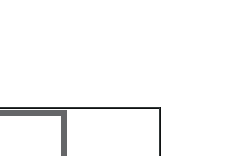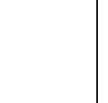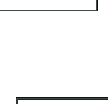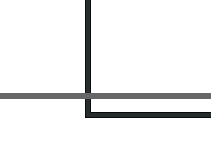The impossible return?
This text was required by the Moscow Art Magazine that dedicated its double issue 51/52 (summer of 2003) to “the return of the sixties”. It was observed for some time past that the revolutionary-demanding and populist genius/spirit of the years following 1965 was reiterated in the artistic problems of the period following 2000, starting from fashion and life-style until the taste for a certain type of lection and intellectual option. I found appropriate to propose a case study on a less known Romanian artist, but whose works still remain to be rediscovered and researched in detail. I’m talking about the visual artist Eugen Stănculescu.
Eugen Stănculescu is first and foremost a painter, in the strictest sense of the word. I should say in this context that painting is probably the most present expression environment from here. And this was always the case. As a matter of fact, all our experimental artists started in the painting technique. A series of names, older or newer, could be provided to support this claim, but the reasoning for each case would occupy multiple pages; therefore, I should resume myself to this provocative statement: it might be believed that in the essence of the painting, somewhere mysterious and deep, the germ of the novelty, of the unseen or the inexpressible, the mystic core of the innovation is hidden.
Eugen Stănculescu was born on February 3rd, 1942, in Bucharest and this fact is not without importance. We shall see later. Here he also graduated the Institute of Plastic Arts, in the class of the professor Gheorghe Labin, about who he had only kind, soft-tongued words. And this was not because Gheorghe Labin was a good mentor and a skilled educator, but because he offered the maximum of freedom to all his disciples, without exception. Or, at the end of sixties, this expression was of maximum importance. The freedom thus obtained inhumed, quickly and for good, “the socialist realism”, dominant in that troubled epoch. From that moment, the omnipresent “schizophrenia”, so characteristic for most of the autochthonous artists, began. The beginning of the seventies marked in Stănculescu’s works the presence of constructivism, of neoplasticism – a quasi-unnoticed and occulted aspect. In Bucharest he was a lonely voice, while in Timişoara such problems were discussed on the background of some serious metamorphoses and disturbances of artistic nature.
The stormy consciousness of the artist was looking for a new and alternative social utopia, as the artist in the primary epochs of the modernity, when the artistic identity was constituted and maturated. For Stănculescu, the artist was somebody in the position of Robinson Crusoe. The real artist, of the real socialism, was a backwards construction: a chameleonic, bi-cephalous, divided, de-phased creature. This schizophrenic system functioned in the Romanian art until very recent: on one hand, the artistic consciousness dictated an unconditioned obedience to “the helmsman” and the regime, and, on the other hand, “the demon of the genius” struggled to be itself, a perfect individualist. Briefly said, the image of the Romanian artist was different when he showed up outside the country's borders (when this was allowed) in comparison with his movements on the local scene. Usually, the show rooms and the thematic exhibitions looked always predictable and almost without exception were boring and trivial. The catalogues and publications of those times are eloquent in this sense, illustrative for understanding the avatars of the epoch. I shall not detail here, since this is another topic. These really don’t belong to this context, being similar to the situations in the entire Soviet system. And they are well known to the specialists in this field.
In the two-headed, divided, and dysfunctional conjuncture that was created, the art of Stănculescu became even more invisible than at the time of his debut, at the end of the sixties. Therefore, since he didn’t agree to participate to this concert, the artist abandoned gradually the art. This became his unique and unrepeatable project: the artist imposed himself a total silence. Between 1974 and 1991, he didn’t work and exhibit anything. meanwhile, he did a lot of things (he taught drawing, conceived covers for technical books, “wrote calligraphically” panels and slogans with communist meaning, imagined various posters, worked in a design workshop – although what design we might talk about in the gray era of Ceausescu?), but not the serious, high art, this was left to the others. But he was well informed about everything, he collected trivial post cards, photos, articles from reviews and magazines, was himself a photographer. He also wrote a lot, kept diaries, made poetry. He watched very carefully the artistic process although he never bragged about this. He really became a “transparent” man, an invisible personality. Clearly, he wasn’t a member of the Union of the Plastic Artists. He had not a creation studio. For almost three decades, the artist Stănculescu did not exist for the artistic world, for the public, for the overwhelming majority of his craft colleagues, for the critics in the field, and for those critics “delegated” to “speak sharp” to him, at the end of the sixties, labeling him as a valueless dilettante. And this, after in an important western contest his works and quests were remarked…the silence didn’t change his convictions, he didn’t stray from his belief. All this long period was a sort of art for him; survival without art was an artistic embodiment. It existed thought it. He wasn’t too communicative. To the contrary, only after the fall of Ceausescu’s regime the ice began to move… discreetly. The birth of his first personal exhibition was still far away. In this moment, I could say that the works of Stănculescu illustrate, almost the best, the “cryogenics of art” phenomenon. In his case, this was stationed exactly where he abandoned it, between sixties and seventies. Stănculescu’s art is a very interesting archaic mix between the graphic constructivism and the painting expressionism. Extremely sensible artist, Stănculescu continued from that point, accomplishing some installations of big dimensions and some paradoxical objects (dynamical and static), which he ardently inscribed with his intellectual belief, in which coexist, in an organic and visible manner, the belief in God and the polyvalence of life and art. Only in 1996 he decided to abandon his anonymous and impersonal existence. He collected enough material to lay the foundations of a not too big exhibit. Because in the Bucharest of that year there were not private and alternative galleries, Stănculescu had to join the UAP (Romanian Union of Artists) in order to receive an exhibition hall. The calculus was correct: a central space with maximum of visibility was needed. An event with real impact was needed. And the result of this first exhibition was impressing. A genuine reborn of the artist, said the comments. The exposition contained all the ingredients of the contemporary sensibility: installations, objectualism, photography, performance, but the spirit and the ghosts of the past, of those isms that before defined the artist, still hovered over these. The immaterial shadows of the past were projected and reborn under the magic stick of this artist-trickster. Various chronicles started to be written about Stănculescu, he became full member of the artistic community. Invitations to the exhibits became normality. He was the one who proposed a new word for the performance art, entitling it active sculpture. I was very close to this artist; I often discussed and debated (not without controversies) the result that his so long self-imposed silence could have. Although he participated to several festivals and exhibitions, he felt himself a stranger, a renegade and a misunderstood. The assumed isolation couldn’t pass without traces and sequels. Stănculescu remained perceived rather as an alien than a contemporary artist, as his fellows were seen and perceived. Somehow this reaction could be understood, accepted up to a point. It’s not very easy to receive by your side, in between millenniums, an artist who constantly reanimates and reconstitutes the tradition of Marcel Duchamp and Joseph Beuys, who strongly believes in the force of painting, in the high form in which it is materialized in the works of Francis Bacon or David Hockney and who is thrilled by the lection of Proust’s prose.
Between May 1994 and May 1995, during a whole year, after he had shaved his head, Eugen took photos of the hair growing process. This action was named History and represents an example of what the artist called “active sculpture”. Here is his descriptions and motivation: a) the exposure times, light and framing for shooting the head were sensibly different. I also didn’t look for some photos of high technical quality; b) “history” because I followed a natural phenomenon, specific to the animal species; “active sculpture” because the relation photography (as completed art object) – modeling (of the next photo) was determined through participation of the photographer (the artist) in the double hypostasis of modeler (of the reality) and subject of modeling. The sculpture creates sculpture.” [From a private letter]. The subsequent plastic discourse, defined and crystallized in a text-confession in the summer of 19777 is a long rethinking and decantation of his belief about art. In the exhibition dated March 1999 [2 installations], these plastic and conceptual “projections” could actually be seen.
This type of esthetic minimalism is perfectly circumscribed by the spirit of the sixties and seventies. It is exactly from there, it belongs organically to that epoch: the period of the strange quests, the epoch of “the personal mythologies”, the decades of the absence, ambiguities and anxieties. Those who got through those years as a private drama will never be able to exist otherwise. The whole artistic and existential itinerary of Eugen Stănculescu confirms the previous affirmation. For those like him, and their number becomes smaller, the return in time is always possible and necessary.
Vladimir Bulat
Translation by Alexandra Macovei





















